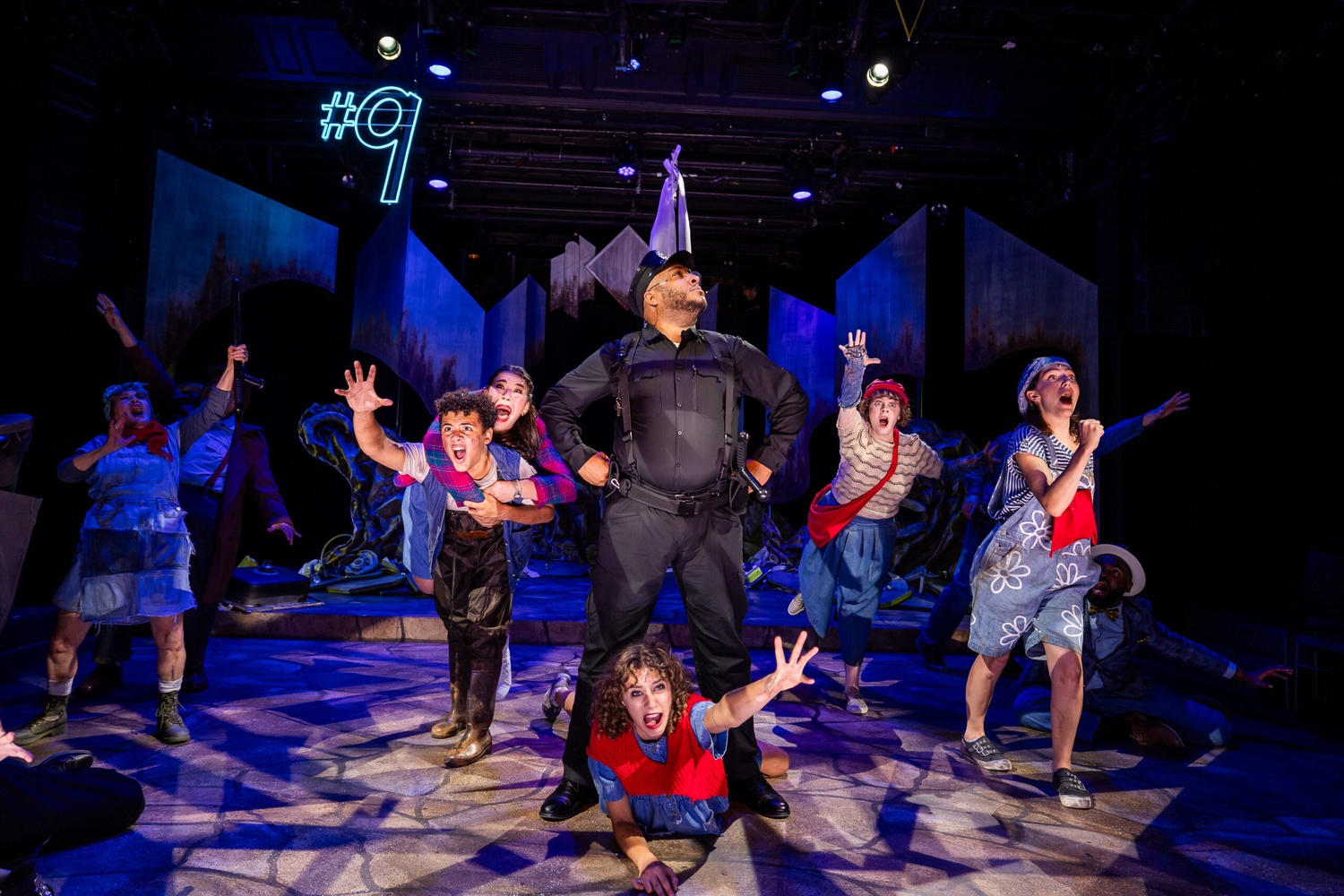
News
Summers Will Not Finish Semester of Teaching as Harvard Investigates Epstein Ties

News
Harvard College Students Report Favoring Divestment from Israel in HUA Survey

News
‘He Should Resign’: Harvard Undergrads Take Hard Line Against Summers Over Epstein Scandal

News
Harvard To Launch New Investigation Into Epstein’s Ties to Summers, Other University Affiliates

News
Harvard Students To Vote on Divestment From Israel in Inaugural HUA Election Survey
'Urinetown: The Musical' Review: Uneasy Relief

Trigger Warning: This musical review discusses topics of death which may prove uncomfortable for some readers.
From Sept. 20 to Oct. 20, Lyric Stage Boston took on “Urinetown: The Musical.” Directed by Courtney O’Connor, “Urinetown” tells the story of citizens who are exploited by a corrupt government that puts a price tag on using the bathroom. Bobby Strong, played by Kenny Lee, is a young boy who recognizes how unethical the law is towards his community and helps them organize a revolt against the tycoon Caldwell B. Cladwell. The comedy was a lighthearted yet profound depiction of the helplessness that citizens feel when they can’t satisfy basic needs. The production boldly critiqued capitalism and an exploitative society through a metaphor that started off as laughably extreme but quickly became relatable. Beyond this message, it also employed some fourth-wall breaks, becoming meta to poke holes in the overachieving nature of musical theater.
Upon stepping into the theater, one would quickly notice the intimate staging, with some audience members’ toes just inches away from the action on the thrust stage. For most musicals in a similar space, the cast would accommodate for the intimacy by making their vocal and physical acting more realistic or similar to nontheatrical human interactions. Yet, the show soon hit audience members with grand, eye-catching numbers like “Urinetown,” as the cast members engaged in traditionally dramatic musical theater vocals and acting. This juxtaposition between the intimate setting and the traditional, flashy musical theater numbers established the show’s satirization of musical theater much more effectively than with a typical Broadway format. Because the action was so in the audience’s faces, they had no choice but to grow skeptical of the showy nature of Broadway musicals.
The song “Urinetown” started off with lyrics that explicitly break the fourth wall, which further implicated the audience in the musical’s message. “You, our humble audience / You have come to see / What it’s like when people can’t pee free / First act lasts an hour,” the chorus sang. Such straightforward storytelling in a musical theater format felt initially off-putting, and through this discomfort, the show introduced the critique to which it returned throughout the show: Musical theater tends to veil truth with showiness and glamor. In doing so, “Urinetown” called into question the genre’s inherent performative nature, causing audience members to wonder if the medium’s inauthenticity was compatible with serious themes like social protest and inequality.
The musical was not obsessed with being hyper realistic, which made sense in the small theater environment. The costume design, by Rachel Padula-Shufelt, had members of the cast playing multiple characters who were distinguished by slight costume shifts, such as throwing on a hat and a jacket to become an entirely new character. This choice revealed to the audience the ways in which theater was not completely realistic, nor must the audience expect it to be.
Janie E. Howland’s scenic design furthered this message, electing to make more minor shifts to signal an entire scene change, such as bringing in a cart or a table with chairs. While these choices are not uncommon in small theaters, they were more distinguishable given the Broadway-level vocals and acting being performed with the techniques and space of the small theater. This dissonance in “Urinetown” may have been reflective of a larger discussion on how small theaters are allowed to make choices that plainly expose the fictitious nature of a show, while massive musical theater productions must pretend to be realistic in a way that is not necessarily authentic or truthful.
In a musical with predictable narrative beats, the only surprising twist was when Bobby is forced to jump off of a building to his death as punishment for rebelling. In staging this dramatic moment, director Courtney O’Connor diverged from other productions by substituting Lee for a doll to illustrate this to the audience. The death disrupted the show’s comedic tone, making audience members uncertain about how to feel at such a dramatic and jarring twist. Perhaps the only consolation to any audience member needing easy relief from the scene was through the absurd visual of a doll. The use of the puppet contributed to the point that “Urinetown” made, as the unrealistic visual of the puppet paralleled how society accepted untruthful displays or opinions for the sake of circumventing discomfort.
The musical was successful at entertaining its audience with comedic lines and energetic music, and it also satisfied experienced theatergoers with complex themes to grapple with. After the show, audience members flocked to the bathroom — listening to people talk about pee for two hours can have that effect.
“Urinetown” ran at Lyric Stage Boston from Sept. 20 to Oct. 20.
Want to keep up with breaking news? Subscribe to our email newsletter.
